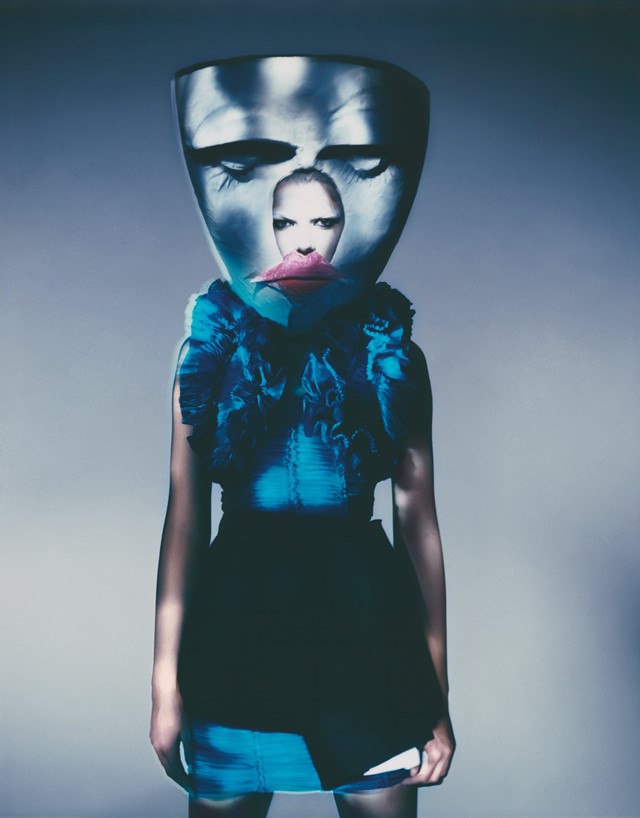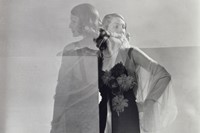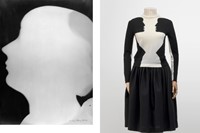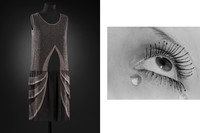A new exhibition at MoMu in Antwerp makes a compelling case for Man Ray’s influence on fashion designers like Jonathan Anderson and Martin Margiela
Antwerp is a quiet place. Located a short train ride from Brussels, the quaint Belgian port city has medieval cobbled streets and sleepy cafes, yet it’s been responsible for some of the most boundary-breaking fashion the world has ever seen. In 1986, the Antwerp Six – a group of graduate designers from the Royal Academy of Fine Arts in Antwerp – won over the fashion press after they travelled across Europe in a van to show their collections in London. They were Ann Demeulemeester, Marina Yee, Dries Van Noten, Dirk Bikkembergs, Dirk Van Saene and Walter Van Beirendonck, united not necessarily in aesthetic but in their embrace of androgynous, deconstructed, anti-glamourous fashion. Affiliated but not officially part of the Antwerp Six, Martin Margiela (who also studied at the Academy), is perhaps the most influential of them all.
Today, a museum called MoMu works to keep the city’s remarkable fashion legacy alive. Founded in 2002, the wood-panelled building – designed by Marie-José Van Hee and inspired by monasteries – houses two temporary exhibitions per year, a library, and an impressive, ever-shifting permanent collection (in storage, the museum has over 38,000 pieces either vintage or bought “fresh” off the runway).
Like much of Belgian fashion itself, MoMu takes a thought-provoking, avant-garde approach to displaying and thinking about clothes – making most other fashion exhibitions feel stiff and outdated. “One of the roles of a contemporary fashion museum is to push the meaning of the term ‘fashion’,” reads the website. “People need a place to explore what fashion is, and what it does to us.” MoMu, as it turns out, is just that place.
Their latest exhibition is dedicated to Man Ray and his influence on contemporary fashion designers (many of them Belgian) and fashion photographers. An American sculptor, painter, photographer and filmmaker with links to the Dada and Surrealist art movements, Man Ray and Fashion hones in on the artist’s lesser-known, prolific work as a fashion photographer in the 20th century. Born in 1980 in Philadelphia to a seamstress mother and a tailor father, fashion was part of Man Ray’s DNA from the start. His earliest sculptures, shown in the first room of the exhibition – Obstruction (1920), a cluster of suspended wooden coat hangers, L’Enigme d’Isidore Ducasse (1920), a sewing machine wrapped in a blanket with string like a Christo and Jeanne-Claude, and Cadeu (1921), a flat iron with 14 nails on its underside – transformed utilitarian objects involved with clothing into something unnerving and absurd. Man Ray was greatly influenced by Dada pioneer Marcel Duchamp, who turned everyday objects into art, or ‘readymades’. The pair later became friends.
A sculpture made by Martin Margiela in 1991 hangs alongside these works in the first room (Margiela left fashion in 2009 and became an artist); a silver wire coat hanger whose shadow forms the outline of a pair of breasts. It seems Man Ray would approve; as the exhibition shows, he was not just a fan of ‘readymades’, but was obsessed with women’s bodies too.
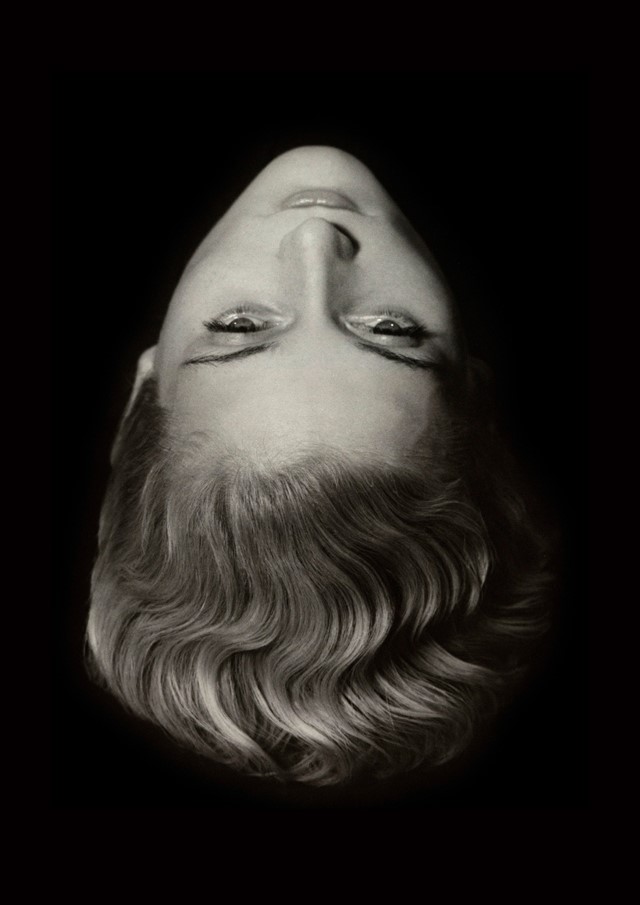
In 1924, Man Ray’s first fashion photographs were published in French Vogue, although he confessed to being more interested in the models than what they were wearing. This was a time when aristocratic ladies were the key influence on fashion, and Man Ray would make his early career shooting prominent designers, artists and society women including Peggy Guggenheim, Coco Chanel, Elsa Schiaparelli, Méret Oppenheim (creator of the furry teacup), Luisa Casati and Nancy Cunard decked out in the most decadent fashion of the time for Vogue and Harper’s Bazaar. “Man Ray loved beautiful women more than the clothes they were wearing,” laughs curator Romy Cockx.
The exhibition puts much emphasis on these women’s larger-than-life personalities and the clothes they wore, and in turn, how they’ve influenced contemporary fashion today. There’s a ghoulish double-exposure image by Paolo Roversi for Acne Paper of Tilda Swinton dressed up as Luisa Casati that mimics Man Ray’s portrait of her on show, alongside clothes inspired by two of his most prominent lovers, the American photographer Lee Miller and influential French Jazz Age figure Kiki de Montparnasse (Phoebe Philo made a red-and-white Céline jumper in homage to Miller, while John Galliano made a pale pink dress for de Montparnasse).
Later, in the section of the exhibition dedicated to the body, Man Ray’s view of women gets a little darker. “He was interested in Marquis de Sade and sadism,” explains Cockx. “In his biography, he never really gave the impression that he was a real sadist himself, but I think it was more the aesthetics of it.” Inspired by the Surrealists’ erotic obsession with mannequins, Man Ray made images of them wound up tightly in rope, and of women wearing stockings so that they appeared either armless or legless. This practice of isolating women’s body parts produced Man Ray’s most famous and beloved image: Les Larmes (1932), where a woman’s single eye looks upward, her eyelashes winged with spindly black mascara.
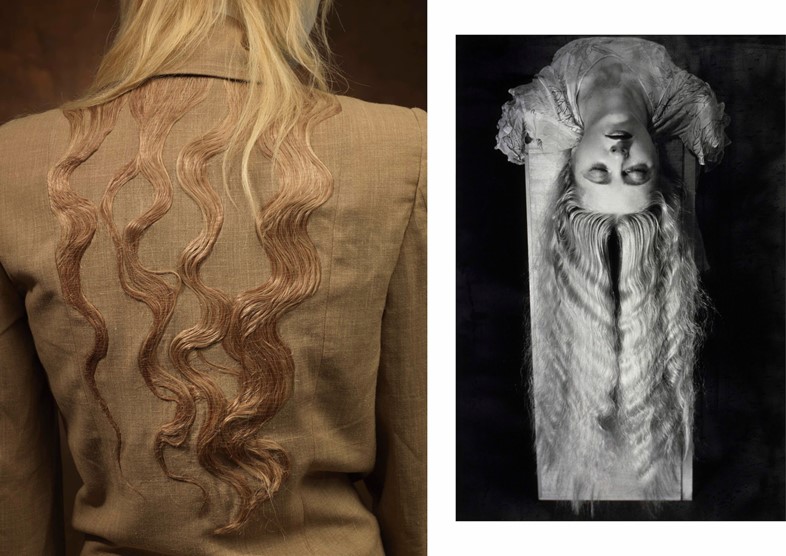
As for Man Ray’s influence on fashion today, the exhibition proves that it is insurmountable. There are links to be made with Jonathan Anderson’s recent surrealist bent at Loewe (his iconic balloon bra and lip dress are on show), a white Margiela shirt smattered with red lipstick kisses, hairy items by designers like Helmut Lang and Julie Kegels, and fashion photography by Paul Kookier, Sarah Moon and Guy Bourdin. Roughly half of the fashion on show is by Belgian designers, which Cockx attributes to the fact that “surrealism is something that is in the Belgian subconscious” thanks to the popularity of Belgian artist René Magritte.
And what of the museum’s multidisciplinary, radical way of showcasing fashion? “People always say fashion is so superficial, but it’s part of society,” says Cockx. “This story illustrates how it all links together. I think about how fashion is created on moodboards and how that is an ideal way to cross-reference all kinds of sources. I hope that we can set exhibitions apart from just window shopping. Art and fashion were influencing each other 100 years ago, and still today.”
Man Ray and Fashion is on show at MoMu in Antwerp until 13 August 2023.
